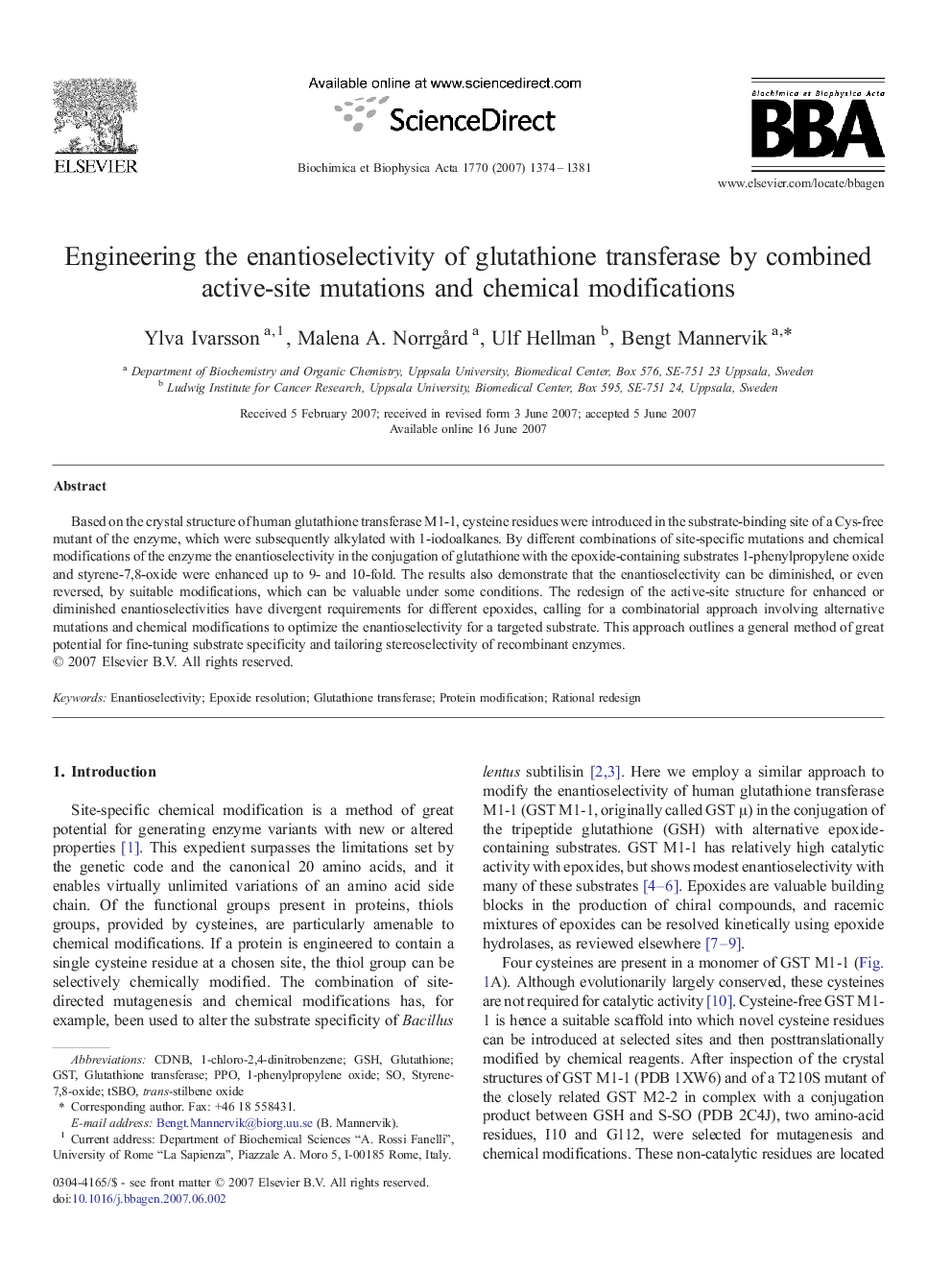| Article ID | Journal | Published Year | Pages | File Type |
|---|---|---|---|---|
| 1948526 | Biochimica et Biophysica Acta (BBA) - General Subjects | 2007 | 8 Pages |
Abstract
Based on the crystal structure of human glutathione transferase M1-1, cysteine residues were introduced in the substrate-binding site of a Cys-free mutant of the enzyme, which were subsequently alkylated with 1-iodoalkanes. By different combinations of site-specific mutations and chemical modifications of the enzyme the enantioselectivity in the conjugation of glutathione with the epoxide-containing substrates 1-phenylpropylene oxide and styrene-7,8-oxide were enhanced up to 9- and 10-fold. The results also demonstrate that the enantioselectivity can be diminished, or even reversed, by suitable modifications, which can be valuable under some conditions. The redesign of the active-site structure for enhanced or diminished enantioselectivities have divergent requirements for different epoxides, calling for a combinatorial approach involving alternative mutations and chemical modifications to optimize the enantioselectivity for a targeted substrate. This approach outlines a general method of great potential for fine-tuning substrate specificity and tailoring stereoselectivity of recombinant enzymes.
Keywords
Related Topics
Life Sciences
Biochemistry, Genetics and Molecular Biology
Biochemistry
Authors
Ylva Ivarsson, Malena A. Norrgård, Ulf Hellman, Bengt Mannervik,
